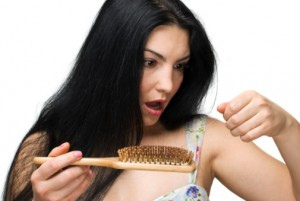
Hair loss regrowth is becoming one of the most sought after cosmetic treatments of our time. In a culture and age where the importance of appearance has bulldozed itself to the forefront of self-worth, hair loss has become an increasingly sensitive issue. The myriad of self-esteem and body image disorders are vastly spanning out, and the significance of hair in aesthetics is no exception. Superficial as it may be, hair is seen as an important factor in identity – the loss of which causes a traumatic dissonance between how a person feels and how they look. Much like the Botox-mom’s who try desperately to grasp onto the vestiges of their 20-year-old selves, it is the process of losing something that is the most devastating.
Medically, there are only two FDA approved drugs for the treatment of hair loss; finasteride (which is an enzyme converter) and minoxidil (which was originally used to decrease blood pressure, with the side effect of hair growth). These drugs work best when they work together. Of the two medications, finasteride is generally more effective. For minoxidil to be effective it must be used continually and regularly. The main difference between minoxidil and finasteride is the application process. Minoxidil is sold as a liquid solution that is applied directly to the scalp in the area of hair loss, while finasteride is taken orally as a tablet. However these treatments have shown limited success. There is no permanent solution to hair loss caused by genetic or hormonal changes, but preventative measures and regular treatment can help slow down the process.
These are the most effective hair loss treatments available today:
Hair transplant surgery
In this procedure (known as Follicular Unit Extraction), surgeons remove scalp hair and hair follicles from an area with thick hair and implant them in an area with thinning hair. This is a four to eight hour long procedure which is done under local anaesthetic. In most cases, several surgeries will be needed to attain the desired coverage. Initially, hair will fall out but will then regrow in the transplanted follicle. The success of this treatment depends on the healing process of the scalp and how many healthy follicles remain after the transplant – which is specific to the individual.
Corticotrophin-releasing factor
Cortisol is a hormone that is released during stress. While small doses of it may be helpful it tough situations – it increases adrenalin, alertness, and lucidity – long-term effects of cortisol are very harmful to the body. This includes hair loss. Research showed that reducing stress using cortisol blockers result in long term hair regrowth.
Scalp care
Caring for the scalp ensures that there is an optimum environment for hair growth by keeping follicles healthy. There are a range of health care products used to keep the scalp moisturised, cleaned and healthy. This technique is usually used in combination with other intensive treatments for the best possible result.
The loss of hair can be a disempowering and traumatic experience, but hair loss regrowth options do exist. Find out from your doctor about which treatment would be most effective for you.
Steven wrote this article after having hair loss regrowth





